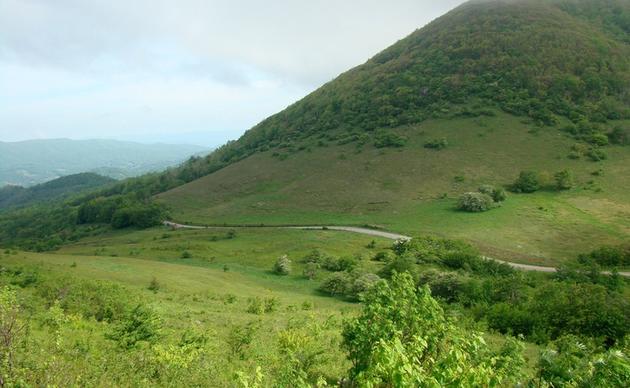Lea-Hutaff Island IBA
Lea-Hutaff Island is one of the few unbridged, undeveloped barrier islands in North Carolina. The island has been battered by storms, flooded, overwashed, and eroded, and is now a low narrow, ribbon of sand. Lea-Hutaff is a haven for birds and wildlife and a popular destination for beachgoers who enjoy walking, swimming, fishing, and wildlife viewing.
Located in Pender County between Topsail Island to the north and Figure 8 Island to the south, the IBA consists of barrier island beach habitat, saltmarsh, and the associated inlets, Rich to the south and New Topsail to the north. The islands were joined following the closure of Old Topsail Inlet. Lea and Hutaff are characterized by dunes, swales, and overwash fans. The island is almost four miles long, and the IBA encompasses nearly 5,500 acres.
During spring and summer, birds, including Wilson’s Plover, American Oystercatcher, Black Skimmer, Least Tern, and the federally threatened Piping Plover nest and raise their young on the island. The island represents the southernmost regular breeding site for Piping Plover. Clapper Rails nest in great numbers in the marshes bordering the island. Nelson’s and Seaside Sparrows are abundant during the fall and winter and the island is a globally significant site for Saltmarsh Sparrow. At other times of year, numerous migrating and wintering shorebirds flock here, numbering a thousand or more during the peak of migration. During migration and winter, thousands of shorebirds feed on its shores and inlet shoals.
From about May to September loggerhead sea turtles make the difficult trek onto shore above the high tide line where they dig a hole and deposit up to 100 eggs. The eggs hatch in about 70 days and the turtle hatchlings cross the beach to the open ocean.
Audubon North Carolina monitors the island throughout the year. Studies of Seaside, Nelson’s, and Saltmarsh Sparrows are conducted by the University of North Carolina-Wilmington. In addition, Topsail Inlet on the northern part of the IBA provides critical habitat for migrating and wintering Piping Plovers; as many as 26 birds have been observed during migration, including at least six individually banded plovers from the Great Lakes population.
Who manages Lea-Hutaff Island?
Although now physically one island, Lea and Hutaff Islands are separated in ownership. Hutaff Island is privately owned. Audubon North Carolina, the North Carolina Coastal Land Trust, and the State of North Carolina have worked to protect the island for close to a decade. The Lea Island State Natural Area, established in 2003, includes most of Lea Island. In 2010, Audubon North Carolina acquired a 35.7-acre tract on Lea Island that nearly doubled the acreage already protected through this partnership. Audubon North Carolina posts and patrols waterbird and shorebird nesting sites on both islands, and monitors birds throughout the year.
During the spring and summer Audubon biologists monitor nesting birds and talk to island visitors about sharing the beach with wildlife. Audubon staff monitors the island year-round and posts nesting areas in the spring to protect the 7 species of shorebirds that nest here.
Beach-nesting birds
It’s hard to imagine that some birds nest on the hot sand on a barrier island…but they do! From April through August, terns, skimmers, oystercatchers and other beach-nesting birds find plant-free sandy areas where they build their nests, which are bowl-shaped depressions called scrapes. Nests are sometimes lined with bits of shell and debris to help hide the eggs.
One or both parents incubate the eggs and shelter the young from sun and rain. The eggs are colored to blend in with sand and shells, making them difficult to see. Downy chicks that look like tiny fluff balls leave their nests soon after hatching, but stay on the beach for several weeks with their parents until they are old enough to fly and fend for themselves.
Share the beach with birds
Nesting on the beach is a challenge. Storms and extreme tides can wash away entire nesting colonies and predators including foxes, raccoons, and gulls eat eggs and young. Coastal development and beach stabilization threaten the birds’ nesting habitat.
People and their pets also pose a threat: when people or dogs enter nesting areas, adult birds become alarmed and fly off their nests, leaving the eggs or chicks exposed to the elements and predators. Just a few minutes of exposure to the sun or severe weather can kill an egg or young bird.
We can all take a few steps to help the birds have a successful nesting season.
• Stay out of nesting areas and enjoy the birds from a distance.
• Avoid flying kites, throwing balls, and exploding fireworks near nesting and feeding areas. These activities can cause birds to leave their nest and chicks unprotected.
• Do not feed gulls. This seemingly harmless activity can attract gulls to nesting areas where they prey on eggs and baby birds.
• Take trash with you when you leave the beach. Garbage, including bait and scraps from cleaned fish, attracts predators to nesting areas. Discarded fishing line can entangle and kill birds.
Take action:
- Watch a video about beach-nesting birds.
- How can I help Audubon's work at Lea-Hutaff? Give a bird one more day, help protect an IBA by supporting Audubon North Carolina.
- Your class or group can join students across the U.S. who are raising money for Lea-Hutaff Island through Pennies for the Planet.
How you can help, right now
Donate to Audubon
Help secure the future for birds at risk from climate change, habitat loss and other threats. Your support will power our science, education, advocacy and on-the-ground conservation efforts.
Sign Up For Our eNewsletter
Keep up-to-date on all that happens with Audubon North Carolina's research, events and volunteer opportunities.




